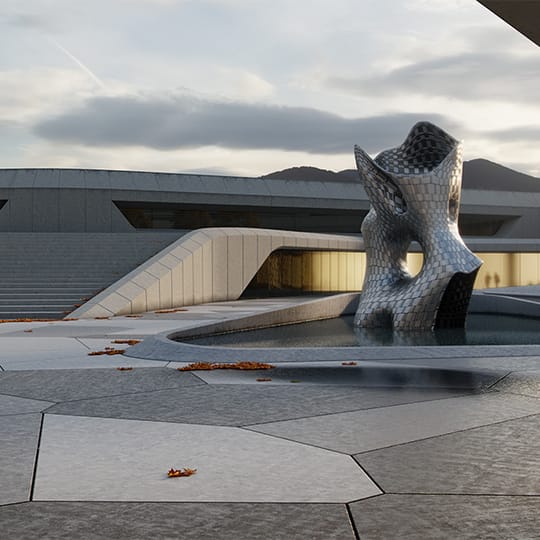
- #Vray for rhino how to#
- #Vray for rhino for mac#
- #Vray for rhino upgrade#
- #Vray for rhino full#
- #Vray for rhino software#
This product may only be sold to customers of the following countries: EU, Albania, Bosnia and Herzigovina, Iceland, Croatia, Macedonia, Norway, Switzerland, Montenegro and Serbia. More info can be found on the product page: Simulate realistic daylight scenarios for any time and any location. Light scenes using a single high-dynamic-range (HDR) environment image. Render natural and artificial lighting with a wide range of light types, shapes and controls. Render high-quality, photoreal imagery with V-Ray for Rhino’s powerful lighting, shading, and rendering tools.įine tune lights and materials interactively while you render.Ĭreate photoreal interiors with ray traced and hybrid global illumination methods.
#Vray for rhino upgrade#
V-Ray 2.0 for Rhino (FREE UPGRADE TO V-RAY 3) We’ll touch on this in the following video! Thank you so much for watching.PROFESSIONAL RENDERING FOR RHINO ARTISTS & DESIGNERS Vray optimized settings gallery lindalë forums get free smax interior render settings v ray 3 60 s achieving realistic results with s max v ray interior lighting and rendering vray render settings for interior visualisation tutorials area by autodesk. This is the fun part where you can get creative and start adding in more details.
#Vray for rhino full#
The final step to get your base render is just a matter of rendering it out at the best settings.Īdditionally, you’ll want to add some render elements to give you full control of the post-production process.
#Vray for rhino how to#
I’ll have a video coming out soon on how to reduce the file size of your rhino project so stay tuned. That’s why I had to use proxies for the trees. You can go crazy here with furniture, people, trees, plants, animals and so forth, but that can really slow down your model. I added some 3D models of trees and plants. Maya, V-Ray for.Learn VRay Easily and Quickly with our free VRay tutorials for 3Ds Max and.
#Vray for rhino for mac#
After downloading the Beta version of vray 3 for Mac Failed to checkout V-Ray gui. V-Ray for Rhino now supports NVIDIA RTX cards, tapping into the extra ray-tracing hardware acceleration that comes with. Note: MAC versions of V-Ray 3.0 for Maya do not support GPU rendering.
#Vray for rhino software#
I also had to change the scale of every single texture I added. Vray Rhino Mac, free vray rhino mac freeware software downloads. You can see how the water has white dots from this. This caused more headaches than wanted, so I don’t recommend scaling your model away from 1:1.

I had to actually scale my model down to 1:500 so that I could render it with fur. This makes a massive difference in my opinion but can destroy your pc. Then, it was getting in Vray and adding fur for the grass. Just playing around with it until it suits what you’re looking for. I tested the lighting, what sky I used in Vray, where the sun was placed and resultantly where the shadows would be. Next, I was doing a lot of testing for the actual base render. You’re actually resolving your design as you’re adding materials to your renders.


This process really helps you think about those things, which you might not usually think about. Some things, like the context behind, can be fine to leave. Don’t have anything in the render that has its default material or colour unless it’s done intentionally. Remember, more detail, the better it’ll look. I could have gone a lot further with the detailing of the model but due to time constraints, I had to press forward. I added detail such as doors, windows, overhangs etc. Once you’ve figured out the views you want, you can begin to add detail to that model. Once you’ve got the aspect ratio, you can do some test renders at a low scale to figure out your view for the render. Most importantly, you want to figure out the aspect ratio of your render. You have to play around with how it sits on the page, the layout of your poster. Taking a step back, we have to figure out how it’s going to sit on our poster, unless it is it going to be a single render used online. Where are the cameras placed? This would involve figuring out the dimensions of your render. The first step is to figure out your render views. Therefore, there’s no point modelling up everything to the smallest detail if it isn’t even being shown on your poster.

You only need to resolve what’s shown on your sheet. Especially for a studio project like this, you don’t need to resolve the entire design. The way I worked this project (and this might change in the future), is that I started with a massing model from Sketchup.įrom that massing model, the very first thing I did was find out where I wanted the render view to be, where the camera is to be placed. The more detail you add to your virtual model, the better the render will look and the easier the post-editing process will be. Rendering all starts in Rhino, Revit, Sketchup, or whatever software you’re modelling your design in.


 0 kommentar(er)
0 kommentar(er)
